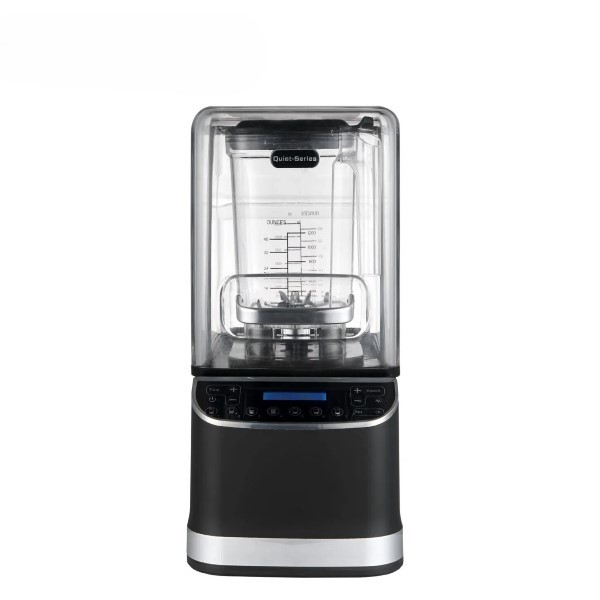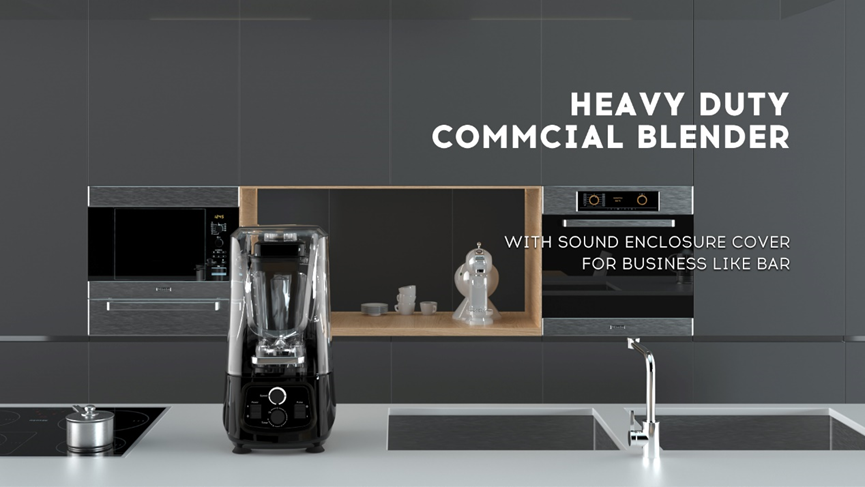Maximize Your Blending Experience: Choosing the Right Sound Enclosure for Your Blender
release time:
2025-08-17
Maximize Your Blending Experience: Choosing the Right Sound Enclosure for Your Blender
Table of Contents
- Understanding Sound Enclosures: What Are They?
- Benefits of Using Sound Enclosures for Blenders
- Key Features to Consider When Choosing a Sound Enclosure
- Different Types of Sound Enclosures for Blenders
- How to Install a Sound Enclosure for Your Blender
- Soundproofing Techniques for Enhanced Performance
- Maintenance and Care for Your Blender and Sound Enclosure
- Frequently Asked Questions
- Conclusion
Understanding Sound Enclosures: What Are They?
Sound enclosures are specially designed structures that encase blenders to minimize noise levels during operation. These enclosures serve as a barrier between the blender and the surrounding environment, significantly reducing sound transmission. As we become more aware of our living spaces and the impact of noise pollution, the demand for sound enclosures in kitchen appliances has surged, allowing users to blend their favorite recipes without the accompanying racket.
Benefits of Using Sound Enclosures for Blenders
Integrating a sound enclosure into your blending routine offers several advantages:
1. Noise Reduction
The primary benefit of a sound enclosure is its ability to substantially lower noise levels. Traditional blenders can produce sound levels exceeding 80 decibels, which is comparable to a lawnmower. With a sound enclosure, this noise can be reduced to a more tolerable level, enhancing your kitchen experience.
2. Improved Focus and Comfort
A quieter kitchen environment allows you to focus better on meal preparation and enjoy your time cooking without distractions. Whether you're following a recipe or experimenting with new flavors, a sound enclosure can create a more pleasant atmosphere.
3. Versatility
Many sound enclosures are designed to accommodate various blender models, making them a versatile addition to your kitchen. This flexibility allows you to use different blenders or upgrade to newer models without needing a new enclosure.
4. Enhanced Performance
By minimizing vibrations and sound leakage, sound enclosures can improve the overall performance of your blender. This results in smoother blending, better ingredient incorporation, and a more efficient operation.
Key Features to Consider When Choosing a Sound Enclosure
When selecting a sound enclosure for your blender, consider the following features to ensure you choose the best option for your needs:
1. Material Quality
High-density materials such as acrylic, MDF (medium-density fiberboard), or specialized soundproofing foam are ideal for sound enclosures. These materials absorb sound waves, preventing them from escaping the enclosure.
2. Size and Compatibility
Ensure the enclosure fits your blender model. Measuring your blender's height, width, and depth before purchasing will help you find the right match. A snug fit is essential for effective noise reduction.
3. Ventilation
While sound reduction is crucial, adequate ventilation is necessary to prevent overheating during blending. Look for enclosures with strategically placed vents or openings to allow heat to dissipate without sacrificing soundproofing.
4. Ease of Access
Choose an enclosure that allows easy access to the blender for loading ingredients and cleaning. Some models feature swing doors or removable panels for convenience.
5. Aesthetic Appeal
Consider the design and finish of the sound enclosure. A visually appealing enclosure that complements your kitchen decor can enhance the overall ambiance while serving a functional purpose.
Different Types of Sound Enclosures for Blenders
Various sound enclosures cater to different blender types and user preferences. Here, we explore the most common options:
1. Full-Cover Enclosures
These enclosures completely surround the blender, providing maximum sound reduction. They typically consist of thick materials and can be equipped with ventilation systems to ensure optimal airflow during blending.
2. Partial Enclosures
Partial enclosures cover only the top and sides of the blender, allowing for some sound reduction while maintaining accessibility. These are often less bulky and easier to store when not in use.
3. Portable Enclosures
Portable sound enclosures are lightweight and designed for easy relocation. Ideal for those who frequently move their blenders or have limited kitchen space, these enclosures still offer noise reduction benefits without being cumbersome.
How to Install a Sound Enclosure for Your Blender
Installing a sound enclosure is typically a straightforward process. Follow these steps to ensure proper installation:
1. Gather Your Materials
Before installation, gather your sound enclosure, a measuring tape, and any necessary tools specified in the installation guide.
2. Measure Your Blender
Measure your blender's dimensions to ensure a perfect fit within the enclosure. Take note of any additional space needed for ventilation and ease of access.
3. Assemble the Enclosure
Follow the manufacturer's instructions to assemble the sound enclosure. If your enclosure requires tools, ensure you have them ready for a smooth assembly process.
4. Place the Blender in the Enclosure
Carefully position your blender inside the enclosure, ensuring it fits snugly and that any ventilation openings align properly. Check for stability before securing the enclosure.
5. Test the Setup
Before fully utilizing your blender, run a test blend to ensure the enclosure effectively reduces noise levels. Make any necessary adjustments for optimal performance.
Soundproofing Techniques for Enhanced Performance
To further enhance noise reduction, consider these soundproofing techniques:
1. Acoustic Panels
Incorporating acoustic panels inside the enclosure can significantly improve sound absorption. These panels are designed to minimize sound reflections within the enclosure, leading to quieter operation.
2. Rubber Feet
Placing rubber feet or pads under the blender and enclosure will help absorb vibrations and prevent noise transmission to the countertop.
3. Sealing Gaps
Examine the enclosure for any gaps or openings that may allow sound to escape. Sealing these areas with weather stripping or acoustic caulk can enhance soundproofing effectiveness.
Maintenance and Care for Your Blender and Sound Enclosure
Proper maintenance of both your blender and sound enclosure ensures longevity and optimal performance:
1. Regular Cleaning
Clean your blender after each use to prevent residue buildup. Similarly, wipe down the interior and exterior of the sound enclosure to keep it looking and functioning well.
2. Inspect for Damage
Periodically check your sound enclosure for signs of wear or damage. Addressing any issues promptly will prevent further deterioration and enhance soundproofing capabilities.
3. Ensure Proper Ventilation
Regularly inspect the ventilation openings of the enclosure to ensure they remain clear and unobstructed. Maintaining optimal airflow prevents overheating during blending.
Frequently Asked Questions
1. Can I use any blender with a sound enclosure?
While many sound enclosures are designed to accommodate various blender models, it's essential to check compatibility before purchasing. Measure your blender to ensure a proper fit.
2. Will a sound enclosure completely eliminate noise?
While sound enclosures significantly reduce noise levels, they may not eliminate all sound. Factors such as the blender's power and the enclosure's material quality can affect overall noise reduction.
3. How do I clean my sound enclosure?
Use a damp cloth and mild detergent to clean the exterior and interior surfaces of your sound enclosure. Avoid using abrasive materials that could scratch the surface.
4. Do sound enclosures affect blending performance?
When properly designed and installed, sound enclosures do not hinder blending performance. In fact, they can enhance it by reducing vibrations and creating a stable blending environment.
5. Are there any additional soundproofing options available?
Yes, additional soundproofing options include acoustic panels, rubber feet, and sealing gaps with soundproofing materials. Combining these methods can further improve noise reduction.
Conclusion
Incorporating a sound enclosure into your blending setup can significantly enhance your kitchen experience by reducing noise levels and improving your blending performance. Understanding the benefits of sound enclosures, key features to consider, and maintenance tips will empower you to make an informed decision. Embrace the joy of blending without the noise, and transform your kitchen into a peaceful culinary haven.
More information






